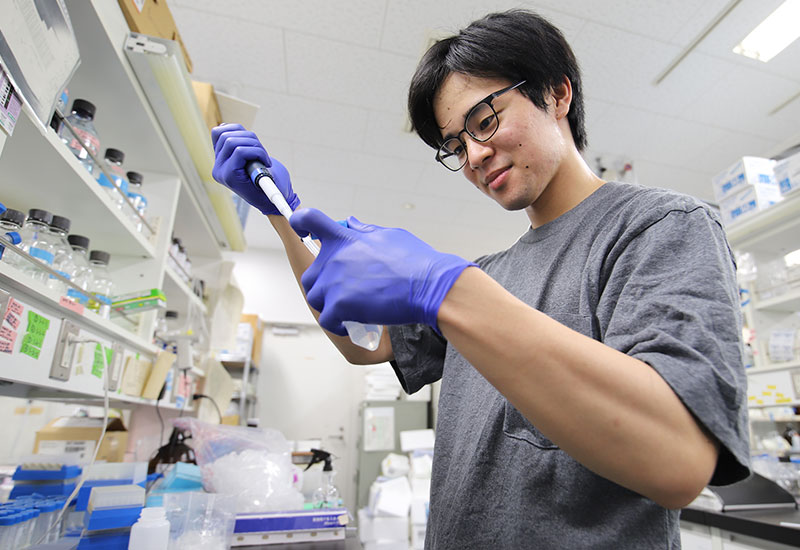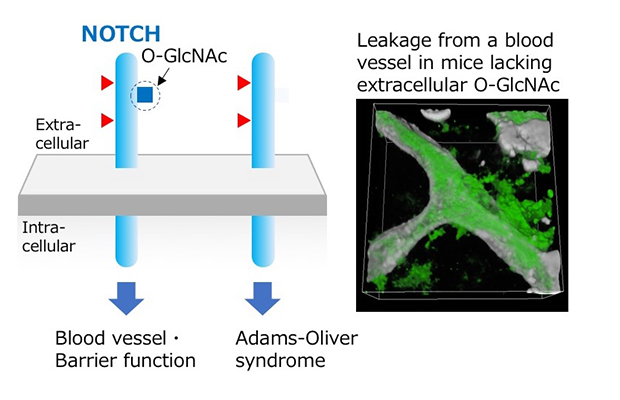RESEARCH
Glycan in Organism Division
Purpose / Contents

Understanding the roles of glycan assemblies in living organisms
The research purpose of the Division of Glycan in Organism is to elucidate the functions of glycan assemblies in living organisms, focusing on specific physiological phenomenon or disease. In particular, our research targets several physiological events, including neural functions, development, regeneration and aging as well as diseases such as cancer, infectious diseases, and neurological disorders.
The center promotes researches on glycan functions in living organism by using glycan-remodeled animals and disease model animals. By integrating the principles of single glycan molecules and glycan assemblies derived from the other two research divisions, we can bolster a better knowledge of how glycans are involved in complex biological and pathological processes. Clarification of the principles of glycans in disease will lead to the development of novel diagnosis and therapy of glycan-related diseases.
Examples

Glycan regulates axon regeration
Examples of our research interests are investigating the roles of glycans in the nervous system and vascular system in our body. Specific glycans such as polysialic acid and proteoglycans play crucial roles in neural functions. We have revealed that proteoglycans critically regulate axon regeneration (Sakamoto et al., Nat. Chem. Biol., 2019, 15, 699-709) and that changes in the expression levels of polysialic acid are associated with mental disorders such as schizophrenia.

Loss of O-GlcNAc causes vascular defects
We have also found that a unique glycan called extracellular O-GlcNAc controls the functions of NOTCH protein, an important factor for tissue development and morphogenesis, and that loss of extracellular O-GlcNAc causes defects in vascular functions (Sawaguchi et al., eLife, 2017, e24419).
Research Division
Contact us by phone

052-789-5365
( +81-52-789-5365 )
Weekday, 9:00-17:00
Contact us




